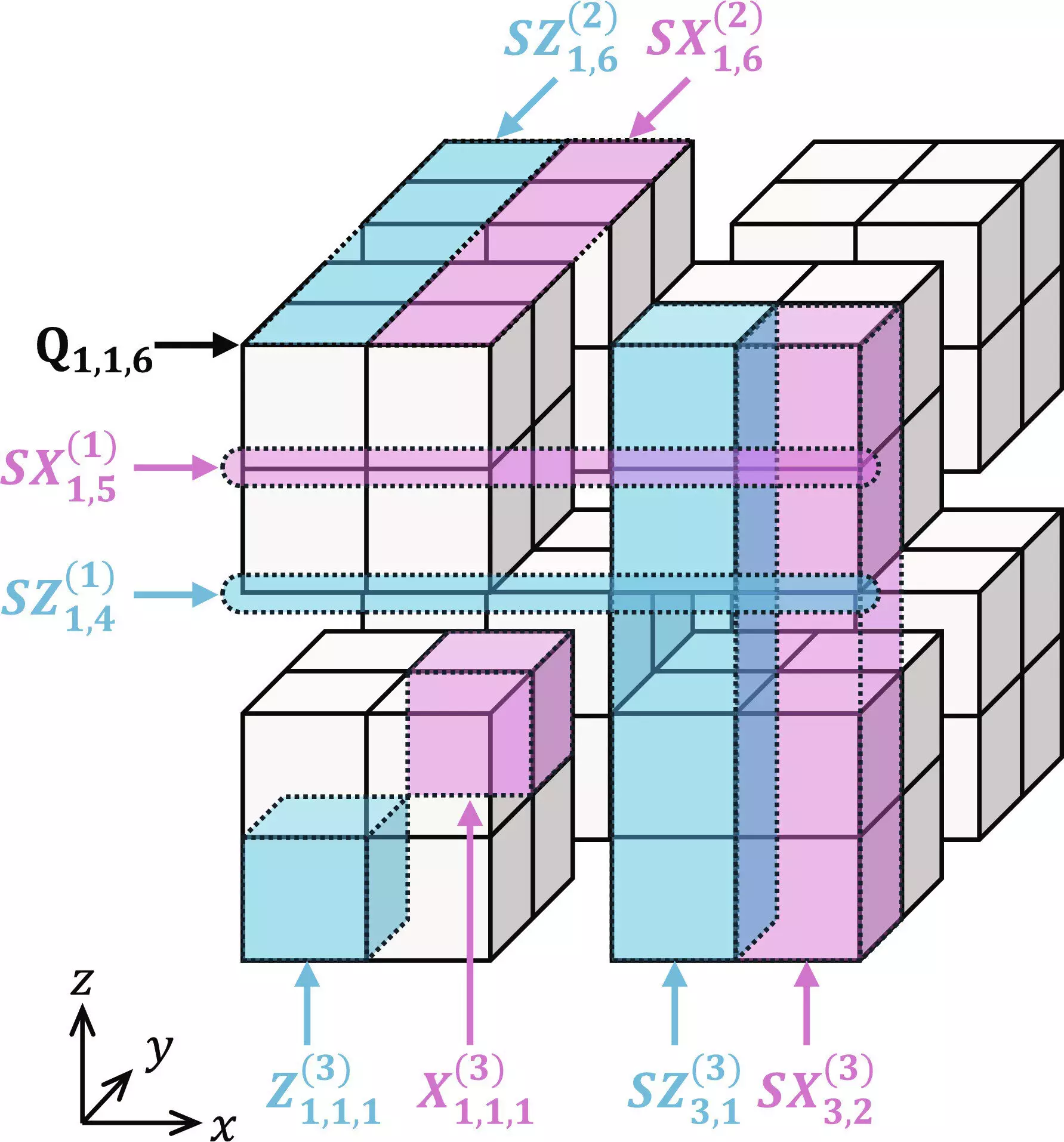Quantum error correction has been a topic of interest for scientists for several decades. The conventional method involves encoding a single logical qubit onto multiple physical qubits and then using a decoder to retrieve the logical qubit. However, scalability becomes a significant issue with this approach as the number of physical qubits required increases dramatically, leading to resource overheads. As a result, researchers have been exploring alternative methods to achieve more efficient error correction in quantum computing.
The Many-Hypercube Codes Approach
In a groundbreaking study published in Science Advances, Hayato Goto introduces a new quantum error correction approach called “many-hypercube codes.” This innovative method offers an elegant geometric solution that could revolutionize error correction in quantum computing. By visualizing logical qubits as forming mathematical hypercubes, Goto’s approach presents a unique way of addressing the inefficiencies of traditional error correction methods.
A Paradigm Shift in Quantum Computing
Goto’s many-hypercube codes represent a departure from the conventional encoding techniques used in quantum error correction. By adopting high-rate concatenated quantum codes, Goto introduces a novel approach that allows for logical gates to be set up in parallel rather than sequentially. This shift towards parallel processing in quantum computing opens up new possibilities for achieving fault-tolerant quantum systems that can outperform classical computers on specific tasks.
Central to Goto’s approach is the development of a dedicated decoder capable of interpreting results from physical qubits using level-by-level minimum distance decoding. This innovative technique enables high-performance error correction by allowing logical gates to operate in parallel, similar to the parallel processing seen in classical computers. Goto’s emphasis on efficient decoding sets the stage for what he describes as “high-performance fault tolerant computing,” highlighting the potential for significant advancements in quantum computing technology.
One of the primary challenges in quantum error correction has been the scalability of existing methods. Traditional approaches require a large number of physical qubits to encode a single logical qubit, resulting in resource-intensive processes. Goto’s many-hypercube codes offer a more efficient alternative with an encoding rate of up to 30%, making them potentially the world’s highest-rated codes for fault-tolerant quantum computing. Despite the high encoding rate, the performance of these codes remains competitive with conventional low-rate codes, underscoring the impact of Goto’s innovative approach.
The introduction of many-hypercube codes represents a significant milestone in the field of quantum error correction. By leveraging the mathematical and geometric properties of hypercubes, Goto has laid the foundation for a new era of efficient and scalable error correction in quantum computing. The implications of this breakthrough extend beyond traditional quantum computing methods, offering a glimpse into the future of fault-tolerant quantum systems that could revolutionize the way we approach complex computational challenges.



Leave a Reply